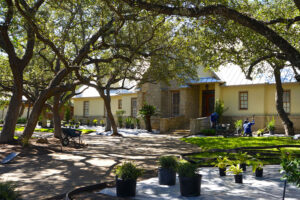As the weather gets colder, it is the time of year to be aware of major snow events and understand the impact that these storms can have on your trees. The buildup of snow, and precipitation that turns to ice, can be too heavy for some trees and can produce the dreaded “crack” resulting in critical damage.
Assess the Damage
You’ll want to wait to make sure the storm has passed and that it is safe to go outside. Once you’re able to get outside, you need to understand what has been damaged; Are there small branches that have been damaged? Are larger branches damaged? Before you go any further, it is important to make sure there are no tangled or downed power lines. It’s also important to understand if the tree is on your property or if it is the responsibility of your city; If that is the case, you’ll want to phone the city directly to advise them of the situation.
Don’t Shake the Branches
Once you’ve assessed the damage and can understand how much of your tree is intact there is a natural tendency to shake the branches so that you can remove the stress on the tree from the accumulated snow or ice. Don’t do this. We can’t stress this enough. Shaking the branches may actually cause them to snap and more seriously damage the tree.
Instead, gently push branches upwards from below with an extension pole; Watch for falling snow when you do this. If the branches are covered in ice, wait for it to melt naturally.
Pruning
The goal of pruning after a storm is to minimize the amount of exposed damage; Any exposed wounds on the tree can increase the chance of pathogens or disease infecting the tree which can cause additional problems. Pruning will help minimize the risk of any objectionable branches from failing and can eliminate any weak branch attachments. There are lots of tips on pruning but generally, this is the best time to give us a call.
When to Call the Professionals
An I.S.A Certified arborist can assess the situation and develop a recommended treatment plan for your tree. Our 24-hour storm assistance is also a great resource if trees become a danger during a storm; If this is the case, call us as soon as possible so we can send a team to your house and ensure that any damage is minimized. We have specialized equipment (such as lifts) and training to minimize risk from accessing damaged trees. We also can provide steel or dynamic bracing for damaged trees and crown raising, which will provide clearance for buildings and homes from any limbs that are carrying extra weight from snow or ice.
The Best Protection is Prevention
The most effective protection for your trees is to ensure that they are healthy and well maintained; We have a full schedule of annual pruning and care that you should be following for your tree. Proper pruning and removal create a healthy tree that can be more likely to withstand a storm successfully. Typically the best time of the year to prune your trees is during the dormant winter months.
Recovery
Concerned customers generally ask us what the likelihood is for a tree to recover from any damage and while the answer varies case-by-case, a good measurement is if the tree’s central leader is intact, and still has at least 50 percent of its crown, the tree will likely recover.






